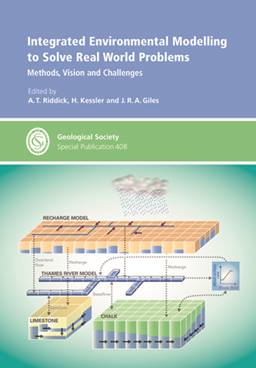Integrated Environmental Modelling to Solve Real World Problems: Methods, Vision and Challenges
 The purpose of this volume is to present a comprehensive overview of Integrated Environmental Modelling (IEM). A burgeoning science area, IEM is used to solve complex environmental problems by linking individual models from different academic disciplines, using different types of input data. This approach, made possible by recent developments in IT technology, allows users to update or change individual modules of the IEM instead of the entire model.
The purpose of this volume is to present a comprehensive overview of Integrated Environmental Modelling (IEM). A burgeoning science area, IEM is used to solve complex environmental problems by linking individual models from different academic disciplines, using different types of input data. This approach, made possible by recent developments in IT technology, allows users to update or change individual modules of the IEM instead of the entire model.
The book consists of seventeen papers, including the introduction, and is divided into four sections. The first section covers the fundamental principles of IEM. The second section consists of case studies that present the state-of-the-art of IEM. The third part covers the human element in IEM, such as how human behaviour is included in IEM to aid policymakers. The fourth part details some of the technical challenges facing IEM developers, such as parallel computing, the linking of models with different time and spatial resolutions, error propagation, high-speed connections that allow sensor data to be read at run-time, and very importantly, differences in terminology and definitions between different academic disciplines.
The book chiefly addresses itself to geographers and geoscientists that wish to learn more about IEM; however, I can also see how it can help aid businesses, such as the insurance and reinsurance industries. An example of this is a paper about the use of IEM in natural hazard modelling for the insurance industry. It brought me back to the 1990s when I first joined the field of catastrophe reinsurance modelling, then still in its infancy, and without the benefits of IEM. Another group that would find this volume of interest are policymakers. Their increasing need to make strategic decisions based on complex environmental and human interactions can often result in cumbersome models.
I have two comments that slightly detract from the brilliance of this book. First, the denseness of the academic prose in most of the papers might represent a challenge for decision makers in business and public policy; because of this the volume runs the risk of not reaching all of its potential readerships. Second, although the book is excellently illustrated, some of the diagrams include text that is too small-sized, making it difficult to read. I hope these issues will be addressed in future publications.
All in all, this book is both fascinating and thought-provoking. It certainly makes a persuasive case of the vast possibilities IEM can offer and will be a useful resource for IEM developers.
Reviewed by Lars Backstrom
INTEGRATED ENVIRONMENTAL MODELLING TO SOLVE REAL WORLD PROBLEMS: METHODS, VISION AND CHALLENGES, by A.T. RIDDICK, H. KESSLER AND J.R.A. GILES (Eds) 2017. Published by: The Geological Society of London, SP408, 274pp. hbk. ISBN: 978-1-86239-687-6. List Price: £90.00 Fellows’ Price: £45.00. W: https://www.geolsoc.org.uk/SP408